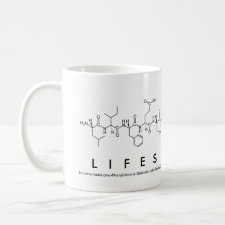
Authors: Fernandes LS, Homem-de-Mello P, de Lima EC, Honorio KM
Article Title: Rational design of molecularly imprinted polymers for recognition of cannabinoids: A structure-property relationship study.
Publication date: 2015
Journal: European Polymer Journal
Volume: 71
Page numbers: 364-371.
DOI: 10.1016/j.eurpolymj.2015.08.005
Alternative URL: http://www.sciencedirect.com/science/article/pii/S0014305715004218
Abstract: Molecular modeling studies were performed to investigate the molecular interactions between the molecules of template (Δ 9-tetrahydrocannabinol - Δ 9-THC - and 11-nor-9-carboxy-Δ 9-tetrahydrocannabinol - THC-COOH) and the reagents of synthesis commonly employed in the preparation of molecularly imprinted polymers (MIP), as functional monomer, porogenic solvent and the cross linker. The electronic interaction energy (Δ E) between the templates and the possible reagents of synthesis was evaluated using the DFT method with B3LYP functional and the basis set 6-311G(d,p), considering that for a given template, a monomer that results in the largest value of Δ E is the most suitable for the synthesis. The solvent effect was also included using the Polarizable Continuum Model and the choice of the most suitable solvent was based on the smallest value of Δ Esolv. It was shown that for both templates, the functional monomer acrylic acid (AA) provided the largest Δ E, while the functional monomer 4-vinylpyridine (4-VPy) provided the smallest one. For choosing the porogenic solvent, chloroform showed the smallest Δ Esolv. Thus, the use of AA as monomer and chloroform as porogenic solvent is expected to result in a better MIP rebinding properties and selectivity rather than MIP synthesized with the other monomers and solvents. The main interactions between the molecules of template and monomers in each interaction site and the correlation between Δ E values and the charge variation in these sites were also analyzed. The results in this study provided a better understanding on the events that may occur during the imprinting process and may be useful in the rational choice of the best conditions for the synthesis of MIPs, which could be applied in the selective detection of Δ 9-THC and THC-COOH
Template and target information: Δ 9-tetrahydrocannabinol, Δ 9-THC, 11-nor-9-carboxy-Δ 9-tetrahydrocannabinol, THC-COOH
Author keywords: Cannabinoids, molecular imprinting polymers, intermolecular interactions, molecular modeling



Join the Society for Molecular Imprinting

New items RSS feed
Sign-up for e-mail updates:
Choose between receiving an occasional newsletter or more frequent e-mail alerts.
Click here to go to the sign-up page.
Is your name elemental or peptidic? Enter your name and find out by clicking either of the buttons below!
Other products you may like:
 MIPdatabase
MIPdatabase









